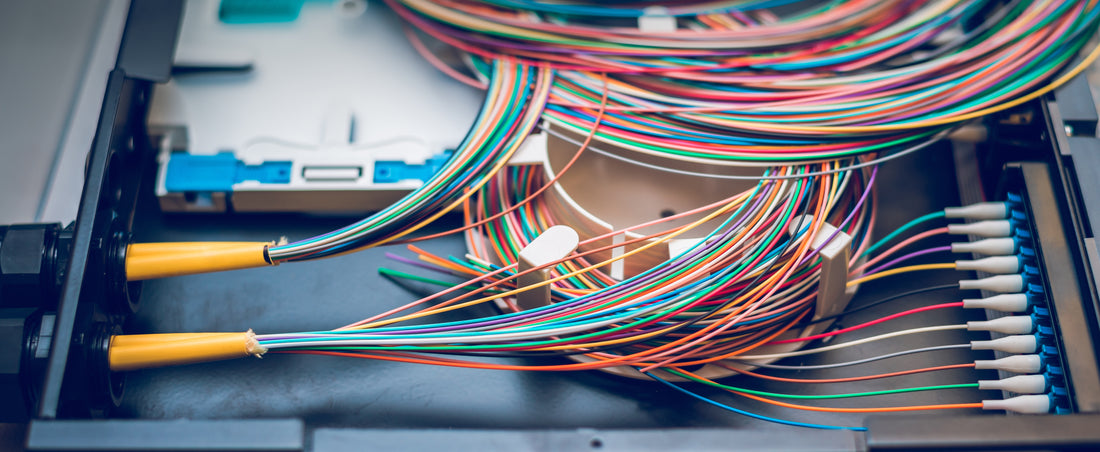
Fiber-Optic Pigtails
Maintaining Your Fiber Optic Network
There are multiple components required to construct an efficient and long-lasting Fiber Optic Network. Understanding the function of each part will allow an installer to know what is essential when purchasing, installing, and managing a custom system. Each part of a network has a specific operation that contributes to the success of the network as a whole. Fiber-optic pigtails are a means of joining one fiber to another fiber or operating device within a Fiber Distribution Box. The following sections will go into detail about the different characteristics and uses of Fiber Pigtails within a fiber network.

What is a Fiber-Optic Pigtail?
A fiber-optic pigtail is a fiber cable that has a connector on one end and a terminated opposite end. The purpose of a pigtail is to connect to a device on one end, through the connector, and establish a joint connection with another cable on the other end, using the terminated end of the pigtail. The connector attached at the end is specific to the device it will be attaching to and the terminated end will be specific to the cable it will be attaching to. For this reason, there are multiple variations of Pigtail fibers to accommodate the specific network set up they can be applied to.

What Types of Fiber-Optic Pigtails Are There?
Pigtails are recognized and categorized by fiber type, connector type, and fiber strand count.
Fiber-optic pigtails are available in both single mode and multimode. Single mode fiber-optic pigtails are associated with the color yellow. OM1 Multimode fiber-optic pigtails are coupled with the color orange, and OM3 and OM4 are fitted in an aqua-colored jacket.
As for Connector types, we offer LC, SC, and ST pigtail variations, in simplex and duplex. Additionally, connectors can vary in fiber strand counts from 1 to 48 strands, and can come either jacketed or unjacketed.
• There are divisions in regard to UPC and APC versions assigned to fiber-optic pigtails.
• Fiber-optic pigtails have female or male connectors specific to insertion.
Connecting the Fibers
Fusion and mechanical splicing are the standard ways of creating a connection between the terminated ends of the fiber. A fusion splicer allows one to splice the pigtail onto the cable with ease and in a short amount of time. Fusion splicing aligns the two cables and then melts them together creating a permanent junction between the terminated pigtail end and the incoming cable. With a mechanical splicer the connection could be permanent or temporary since the mechanism employed holds the fiber-optic cables into place rather than melting them together.
Other options for Pigtail Fibers are whether they are armored or waterproof. Check out our listings of Fiber Optic Pigtails to see the different variations you can purchase.
To End With
The fiber-optic pigtail is another part of expanding and maintaining a fiber-optic network. Manufactured to set up a precise connection through an innovative design the pigtail enables you to reduce termination costs through a user-friendly process.
Over the years, the fiber-optic pigtail has proven to be a worthwhile investment and Fiber Savvy provides a wide array of options to enhance networking projects. We are always here to offer assistance with your project so call us today!
